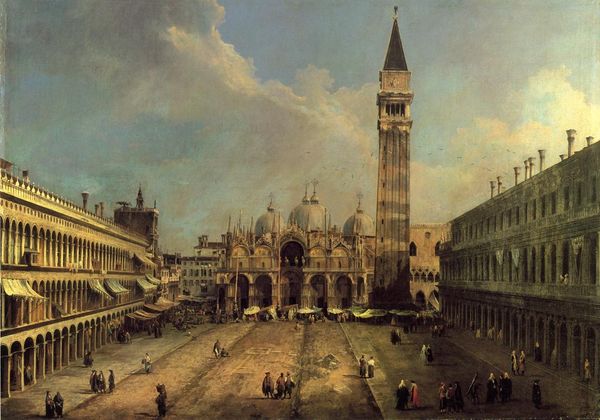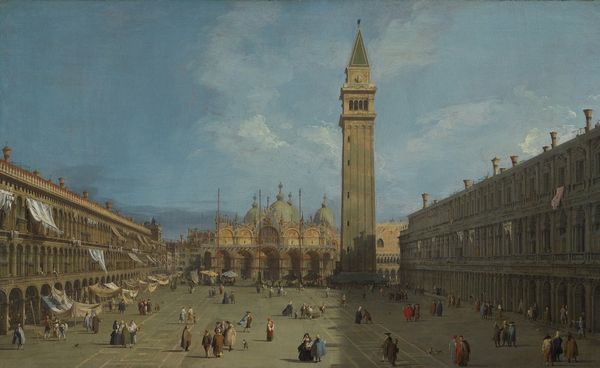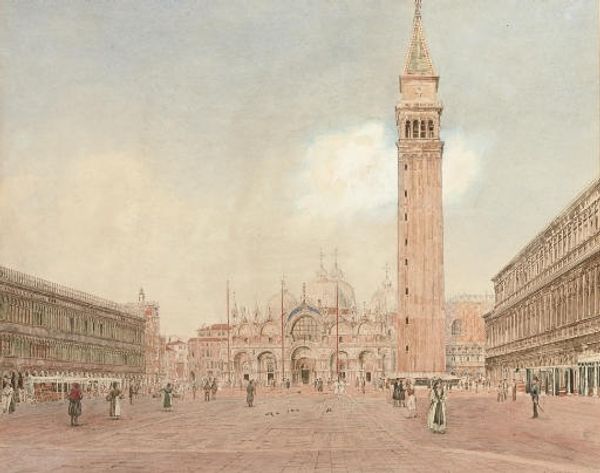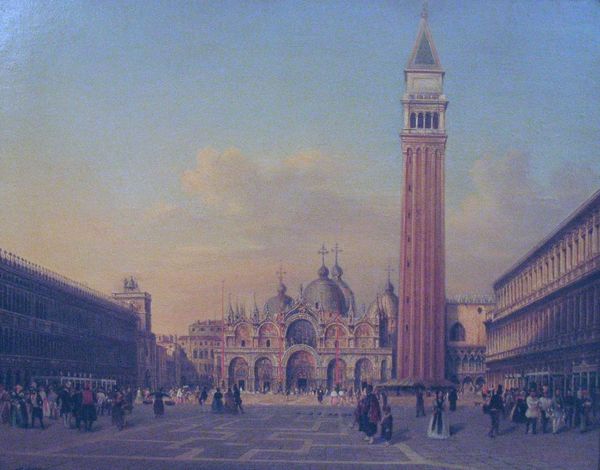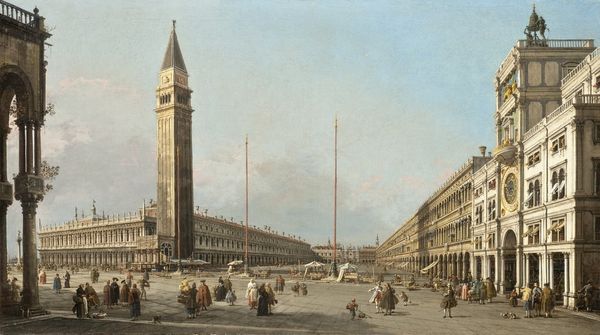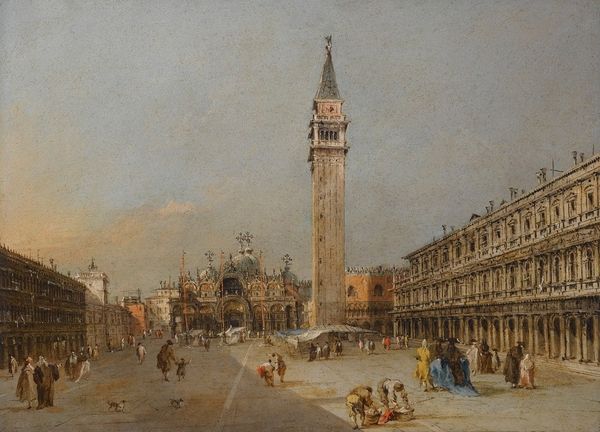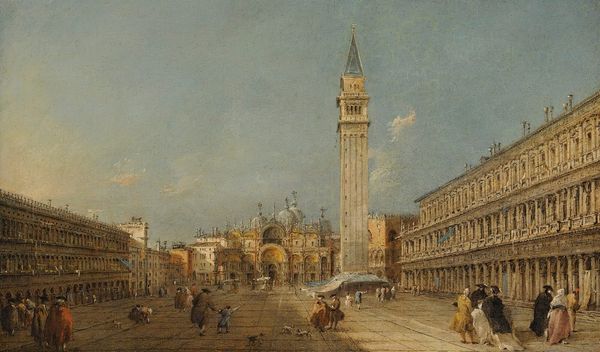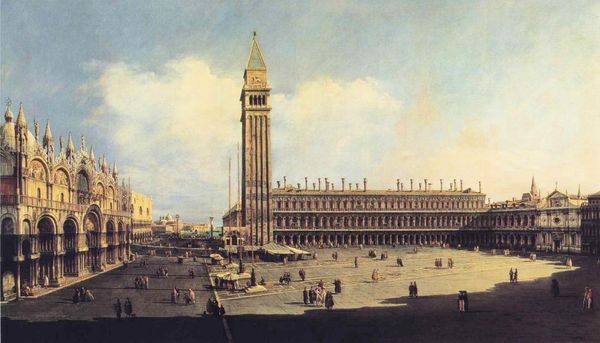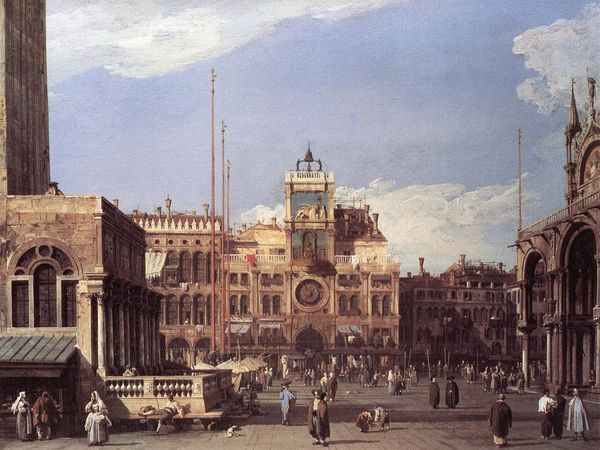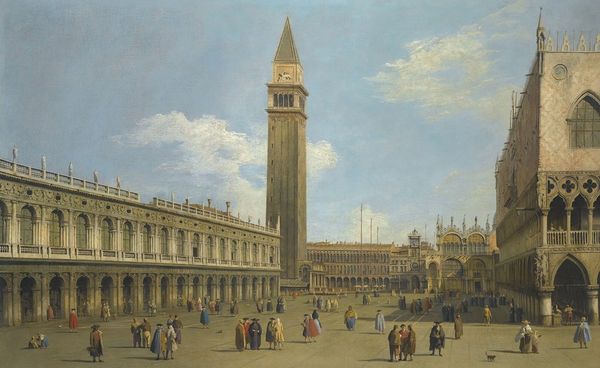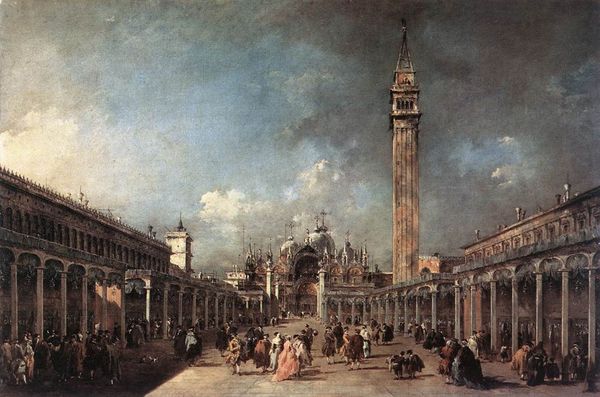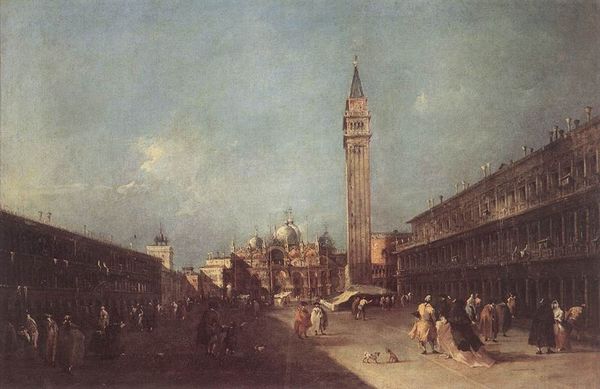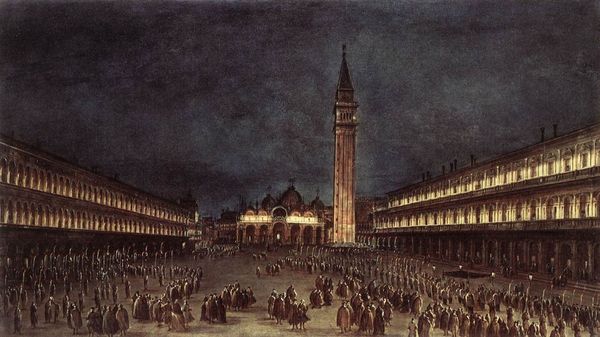
painting
#
public art
#
sky
#
urban landscape
#
venetian-painting
#
baroque
#
painting
#
street view
#
sculpture
#
landscape
#
urban cityscape
#
perspective
#
city scape
#
building art
#
urban art
#
square
#
cityscape
#
genre-painting
Copyright: Public domain
Editor: We are looking at Canaletto's "Piazza San Marco with the Basilica," painted around 1730. It’s currently housed at the Harvard Art Museums. I’m struck by the meticulous detail – the way the light hits the buildings. What compositional elements stand out to you? Curator: The manipulation of perspective is, to my mind, the primary element at play. Note how Canaletto employs linear perspective, converging lines, to create a sense of depth, drawing the viewer's eye toward the Basilica at the rear of the piazza. The grid-like pattern of the paving stones further reinforces this effect, acting as a visual framework for the entire composition. Do you observe how the placement of figures within that grid influences your perception of scale and space? Editor: I see that now. The figures, being smaller, make the Basilica and the surrounding buildings feel so much grander. Almost theatrical, like a stage set. Curator: Precisely. Consider, too, the contrast between the geometric rigidity of the architecture and the more organic forms of the clouds in the sky. This juxtaposition creates a dynamic tension, preventing the painting from becoming overly static or predictable. The variations in tone and texture across the canvas invite further analysis. Editor: So, it's not just a record of the space, but an artful construction designed to evoke a specific response. It feels objective but clearly isn’t. Curator: Objectivity is itself a construct. Look closely: does the light uniformly illuminate all the buildings or are there shadows that selectively enhance specific forms and obscure others? Such visual emphases subtly guide the viewer's interpretation of the scene. Editor: That’s a clever use of visual language to control our experience! I definitely have a better understanding of how to look at architectural paintings now, thinking about composition and construction first and foremost. Curator: Indeed. Formal analysis encourages us to see beyond the merely representational, uncovering the underlying structure that shapes our perception and appreciation of the artwork.
Comments
No comments
Be the first to comment and join the conversation on the ultimate creative platform.
